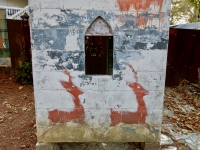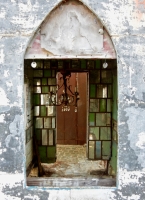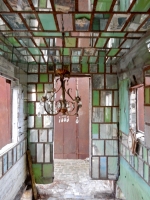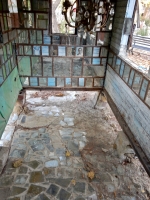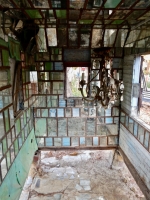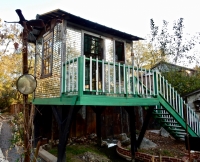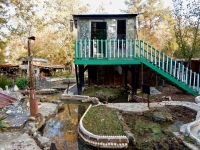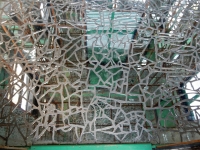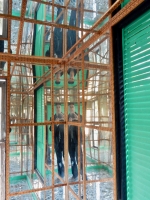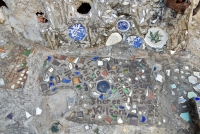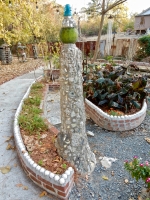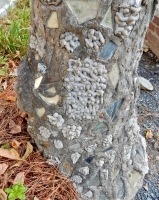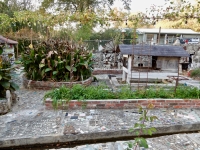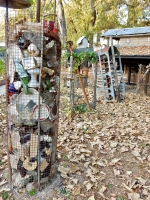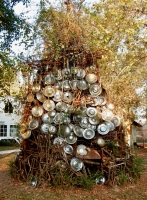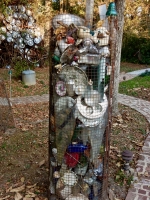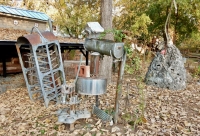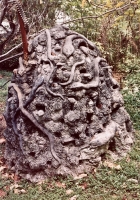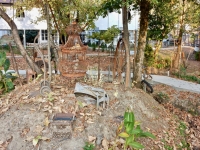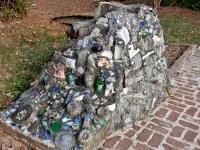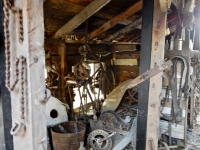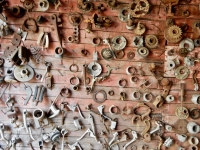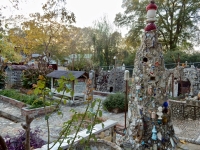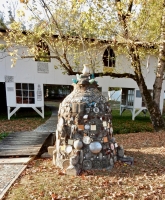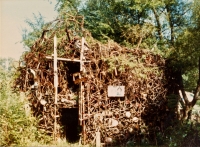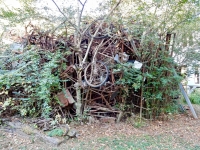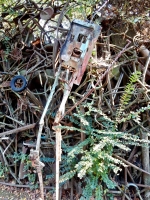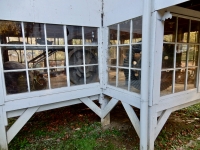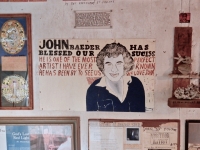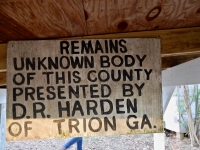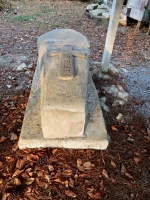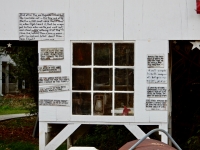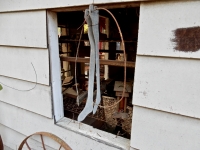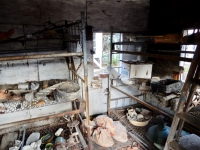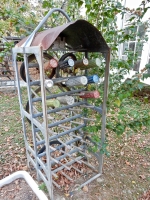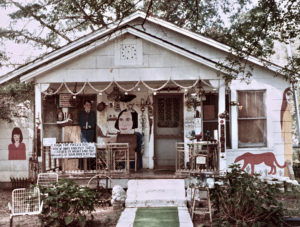
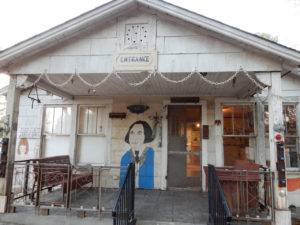
Howard Finster is a case study in the virtues and the pitfalls of making art for reasons unrelated to art. By all accounts he was motivated not by a desire to create art but rather by his urgency to spread God’s message using any means necessary. Art just happened to be the means selected — by God himself, if Finster’s own account is to be believed.
The result: He produced compulsively, without conventional boundaries, collecting and decorating every kind of object he could find. He created a flood of paintings, prints, drawings, booklets and constructions, and he built a showcase garden full of messages, sculptures, signs, paintings and crazy structures, all driven by his visions and his makeshift solutions to the practical problems associated with crafting art. It was a one-person creative flowering like few the world has ever seen, and it was wonderful.
Before turning to art Finster was a preacher and a bicycle repairman, among other occupations whose remnants can still be seen in his garden. His artistic output was prolific, interesting, visionary and — important to collectors — cheap. He built an environment that was stunning in whole and in many of its parts, and he was personally accessible, despite an obvious cultural distance as hipster visitors listened politely to his impromptu and often extended sermons.
Although Finster underpriced his art, at least early on, it was clear that he knew what he was about, which was spreading that gospel message. The pricing strategy worked, to a fault. Selling more art meant reaching more audience, and collectors were happy to snap up his production in quantity. The demand from collectors, meanwhile, put a premium on the rapid reproduction of popular themes.
As perfectly as Finster represented so much that was attractive in the wave of self-taught artists who found success in the 1980s, he also came to reflect the hazards (artistic, anyways) of that success. Repetition of images fit mostly for gift shops and enlistment of family members to help with production did nothing for the credibility of his more ambitious work. Physical quality certainly plummeted, with photocopied text replacing hand lettering on low-end pieces and fade-prone markers replacing paint. Artistic quality declined as well, in the opinion of many Finster collectors. Almost as quickly as he established himself as an artist of extraordinary vision, Finster raised questions: What happens when such an artist, call him self-taught, outsider or folk, becomes so thoroughly engaged with the art market, especially at the low end? What does it mean to be a post-outsider? How does the failing quality of later work affect the status of earlier material?
These concerns were largely irrelevant to Finster himself since his purpose through it all was communicating his visions from God. If cranking out repetitive work sold on the cheap accomplished that goal, he was fine with it. If many of the people who sat through his monologues did not take his gospel teachings seriously, at least they heard them. If people bought and hung his work despite the religious messages it all included, his intention still prevailed — the Word was there whether the collector believed it or not.
What probably did the most to break the heart of his collectors and fans was the decay of his crowning achievement, the Paradise Garden environment. Like most such places, Paradise Garden was always bound to be on the losing end of the contest with the elements. As Finster aged, the elements tended to prevail. Worse, in his final years some of the Garden’s best elements were sold off, either to collectors or, with more justification, to the High Museum in Atlanta. The decay got worse after Finster died in 2001, and to those who remembered the Garden at its peak it seemed a shadow of its former self.
The good news is that after some years of uncertainty and relative neglect, oversight of the Garden seems to have stabilized and a systematic effort is being made to provide for its future. The Garden does suffer from the absence of incidental work that used to decorate it — there’s a liveliness that has gone missing. But many of its core features, including most of the sidewalk mosaics and structures, are still there, making it well worth a visit.
You can find more information about the Garden, and contribute to its well-being, at the Paradise Garden Foundation. The foundation supports and administers the Garden under lease from Chattooga County, which now owns it.
The photos in the gallery below were mostly taken in 2016, with pictures from around 1990 included for comparison where available. They show the persistence of Finster’s vision: Despite the site’s many travails, the sculptures, mosaics, buildings, texts and heaps of junk that Finster himself placed in the Garden still make the place an artistic paradise.
A second gallery specifically focuses on the great sidewalks that wind through the garden.
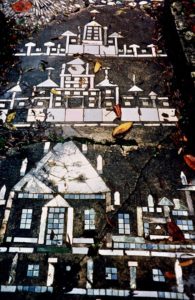 See the
See the
Sidewalks
of Paradise
Garden
Read a review of Norman Girardot’s enlightening exploration of Finster’s art and theology.
Visit my archival Howard Finster page


